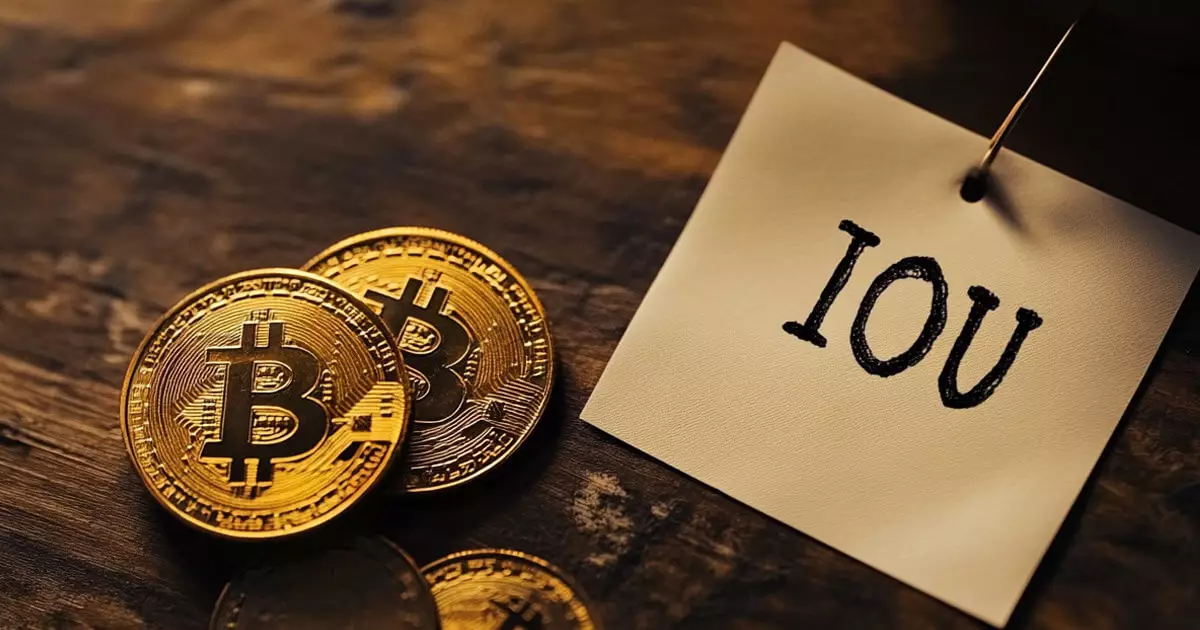The cryptocurrency landscape is fraught with speculation, and recent allegations concerning Coinbase and its handling of Bitcoin in relation to the BlackRock fund have ignited fervent discussions across social media channels. The claims assert that Coinbase is not genuinely utilizing BlackRock’s funds to procure Bitcoin but rather engages in issuing letters of debt, a situation critics argue could manipulate Bitcoin’s market value. Such claims can have significant implications for investor confidence and the perception of Coinbase as a reliable cryptocurrency exchange.
Bloomberg’s senior ETF analyst, Eric Balchunas, has been vocal in dispelling these allegations. In his analysis, he labeled the claims as absurd, emphasizing the seriousness with which BlackRock, a significant asset management giant, approaches its investments. Balchunas articulated that any misconduct on Coinbase’s part would not only provoke anger from BlackRock but would also lead to a violation of regulatory standards. This assertion raises important questions regarding governance and oversight in the rapidly morphing ecosystem of digital currencies. Coinbase’s CEO, Brian Armstrong, has equally taken a stand against the allegations, clarifying how the company ensures that all Bitcoin transactions involving their ETF products are settled on the blockchain. This statement aims to reinforce investor trust in Coinbase’s operational processes, vital for retaining and attracting institutional investment.
Armstrong’s explanation highlights the advanced mechanisms at play in institutional trading. He delineated the liquidity options available to institutional clients, including over-the-counter (OTC) trading avenues, emphasizing that transactions can be efficiently settled in Coinbase Prime vaults, thereby maintaining spatial distance from the general market’s volatility. This responsiveness to institutional demands reflects the maturing nature of the cryptocurrency market, which is increasingly appealing to traditional finance players. Armstrong’s comment regarding the need for confidentiality for institutional clients underscores the competitive nature of the market and the need for discretion, a sentiment particularly resonant among investors wary of excessive visibility and its accompanying volatility.
Balchunas points to two critical dynamics contributing to a misinterpretation of Bitcoin’s price movements. Firstly, he notes that Bitcoin investors, experiencing a prolonged downturn since March, are seeking external reasons for their losses rather than confronting the inherent market challenges. This psychological aspect reflects a broader tendency in investing to externalize blame for poor performance, highlighting a lack of understanding of market fundamentals among some investors. Secondly, Balchunas connects these theories to a prevalent skepticism that investors have towards institutional players and government entities—a skepticism that often leads to conspiracy theories in volatile markets.
The phenomenon he compares to “gold bugs” and their distrust in ETFs illustrates a historical pattern of behavior among precious metals investors. The unease surrounding the structural differences between tangible assets and financial products representing those assets can lead to misconceptions about their value and safety. Such skepticism can foster a toxic environment for communication within the crypto community, where reliance on fact-based narratives is crucial.
Adding another layer of complexity to this discussion is the recent scrutiny faced by Coinbase’s newly launched synthetic Bitcoin product, cbBTC. Critics, including Tron founder Justin Sun, have raised concerns that cbBTC lacks adequate proof of reserves, suggesting that in a worst-case scenario, users could be vulnerable to government intervention that would freeze their assets. Such accusations invoke a broader philosophical debate about trust and custodianship in digital currency and echo sentiments about centralization versus decentralization in cryptocurrency.
The dichotomy between having a centralized entity manage Bitcoin versus holding it independently showcases a fundamental tension within the crypto space. Supporters of decentralized finance (DeFi) underline the importance of individual sovereignty over assets, while proponents of institutionalized cryptocurrency argue for the benefits of security and regulatory frameworks provided by established firms like Coinbase.
As allegations swirl and discussions evolve, the cryptocurrency market remains in a state of flux. Coinbase, as a pivotal player, must navigate these turbulent waters with transparency and a commitment to fostering trust among its user base. The ongoing debate surrounding its practices and products, including its relationship with large institutions such as BlackRock and the launching of cbBTC, signals that the future of cryptocurrency will continue to revolve around issues of trust, regulation, and the desire for both innovation and security in an ever-evolving financial landscape.

